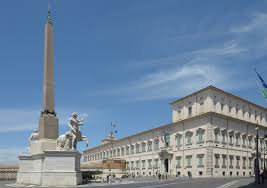by Sabrina Statini
Introduction
Like all structures, also and especially the antenna-bearing structures used in Telecommunications, have a life cycle that will be more or less long and healthy according to at least 3 factors:
- stress and fatigue of the basic and intermediate connections,
- conditions of exposure to atmospheric agents,
- maintenance activities.
If the facilities are located in a coastal area, the second and third aspect become vital and may be essential for the survival and/or safeguarding of the design life of the facilities.
Corrosivity of the TLC site environment
The weather conditions that characterize coastal areas, as known, are particularly aggressive and involve corrosive phenomena which, if not properly monitored, may significantly reduce the performance, structural and functional, of the built.
In fact, the high moisture and salinity content of the air, combined with medium-high temperatures, cause an acceleration of the corrosive process.
The corrosion rate is regulated by: humidity, temperature, presence of pollutants/chlorides, wet time. The concentration of salt in the atmosphere in coastal areas promotes chemical condensation, a phenomenon made up of complex chemical reactions between air humidity and chlorides present on the metal surface. The resulting effect is an increase in the wetting time and exposure of the structure to highly acidic salt solutions, which generate and progressively propagate corrosive phenomena.
The identification of environmental corrosivity classes is provided by various industry standards that, synthetically, distinguish four macro-areas (rural, urban, marine and industrial) according to the content of humidity, pollutants and chlorides in the atmosphere.
Good practices for limiting the corrosive phenomena of TLC structures in coastal environments
Already in the design phase it is therefore essential to make a careful evaluation of the corrosiveness of the environment in which the structure will be placed, so as to define the most suitable contrast solutions, starting from the choice of protective coating (metallic and/or polymer).
In addition to the choice of coating, the correct design of corrosion-resistant structures depends on the geometry of the work itself which, if poorly conceived, may locally promote the deposition of corrosive agents and, thus, aggressive conditions which make the protection system less effective and cause localized corrosion that could spread to the whole structure.
Useful indications in this respect are given by the standard UNI EN ISO 12944 – 3 “Protection against corrosion of steel structures by painting – Part 3: Design considerations” from which some extracts are given.

The following images are intended to provide a demonstration of the (negative) effects that a little careful design with regard to corrosion can cause to the structural organism as a whole.
Attention to the shape of the structure must also ensure, as far as possible, accessibility to each structural component during the operations of maintenance and restoration of treatment in order to ensure homogeneity and absence of imperfections that, Especially in the case of passive systems such as painting, they would render the whole protection useless.
A good design, therefore, starts from the choice and study of the protective coating, whether metallic (hot-dip galvanizing) or polymeric (painting), but makes use of technical and design tricks on the geometry of construction details such as: cut-outs, stiffening elements, bolted and welded joints.
Good corrosion design does not exclude routine maintenance, that is, the planning of periodic inspections of the structure to verify the state of preservation of the treatment and to carry out targeted interventions in case they were found deterioration and damage of various nature: crumbling, cracking, separation of the protective coating.
The objective of a good design is, if anything, to reduce or cancel the number of extraordinary maintenance operations to be carried out when the presence of rust exceeds 1% of the surface of the structure (UNI EN ISO 4628-3).
The costs of extraordinary maintenance are very significant, not only for the restoration operations themselves, but rather for the technical inconveniences and disservices that affect the installed TLC operators. Approximately, considering a metal lattice of about 50 m height which requires restoration of the corrosive protection for its entire height, and on which sandblasting and/ or brushing operations with subsequent application of anti-rust background and paint, would require an expense of about € 40,000.00 – to which must be added the costs for logistics (rental, transport and parking of special means for the ascent) and for possible disservices.
Therefore, a little careful assessment of the corrosive phenomena, due to the context in which the structure will be built, accompanied by an inefficient inspection and control activity, leads over time to unsustainable maintenance costs, as well as a structural deterioration such that the ordinary activities for which the work itself had been conceived could not be carried out.





